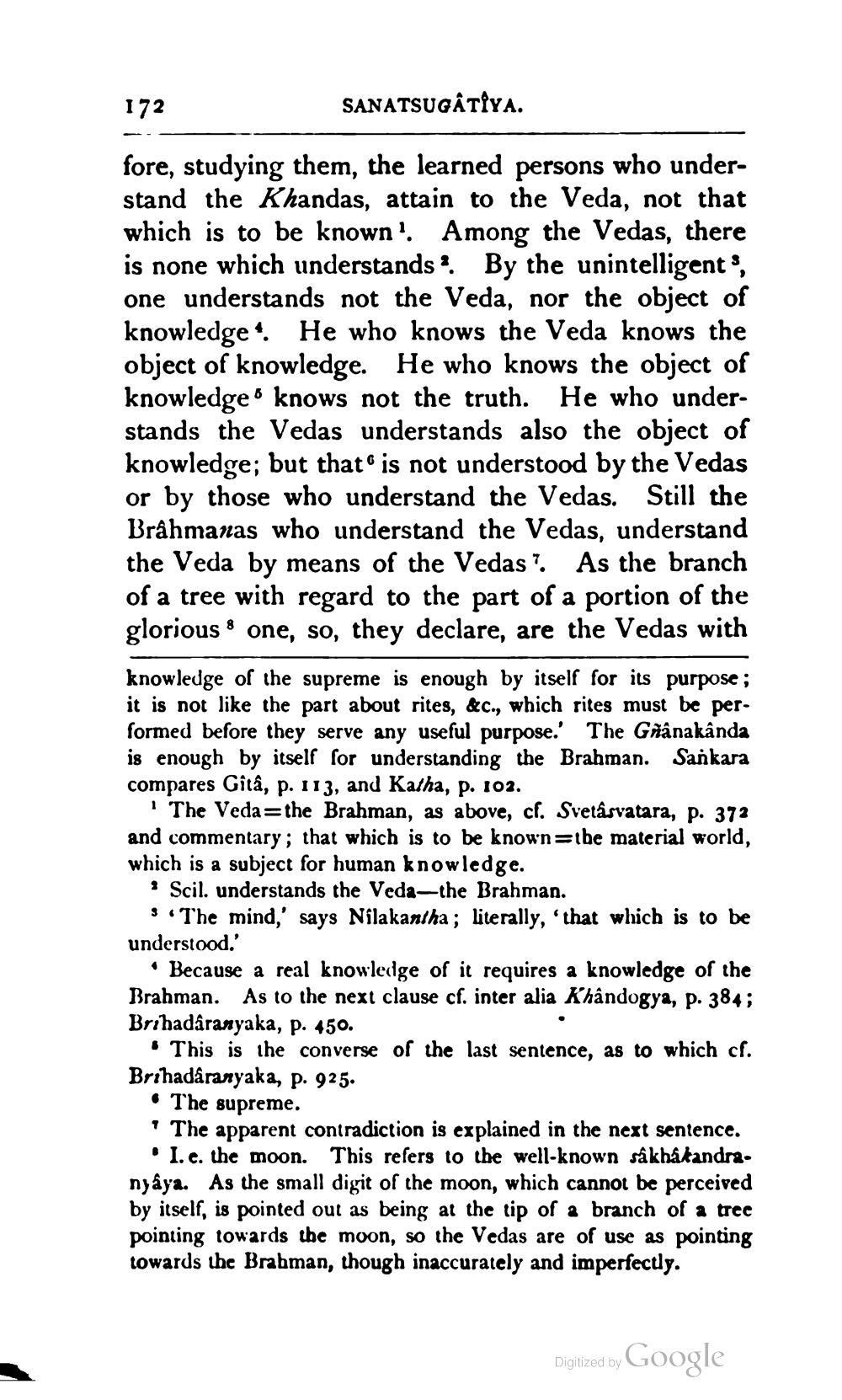________________
172
SANATSUGÂTÎYA.
fore, studying them, the learned persons who understand the Khandas, attain to the Veda, not that which is to be known'. Among the Vedas, there is none which understands?. By the unintelligent, one understands not the Veda, nor the object of knowledge. He who knows the Veda knows the object of knowledge. He who knows the object of knowledge o knows not the truth. He who understands the Vedas understands also the object of knowledge; but that is not understood by the Vedas or by those who understand the Vedas. Still the Brahmanas who understand the Vedas, understand the Veda by means of the Vedas? As the branch of a tree with regard to the part of a portion of the glorious 8 one, so, they declare, are the Vedas with
knowledge of the supreme is enough by itself for its purpose; it is not like the part about rites, &c., which rites must be performed before they serve any useful purpose. The Grânakânda is enough by itself for understanding the Brahman. Sankara compares Gîtâ, p. 113, and Katha, p. 102.
"The Veda=the Brahman, as above, cf. Svetâsvatara, p. 372 and commentary; that which is to be known=the material world, which is a subject for human knowledge.
* Scil. understands the Veda—the Brahman.
s . The mind,' says Nilakantha; literally, 'that which is to be understood.'
• Because a real knowledge of it requires a knowledge of the Brahman. As to the next clause cf. inter alia K'handogya, p. 384; Brihadaranyaka, p. 450.
• This is the converse of the last sentence, as to which cf. Brihadåraryaka, p. 925.
• The supreme. * The apparent contradiction is explained in the next sentence.
• I.e. the moon. This refers to the well-known sâkhåkandra. nyâya. As the small digit of the moon, which cannot be perceived by itself, is pointed out as being at the tip of a branch of a tree pointing towards the moon, so the Vedas are of use as pointing towards the Brabman, though inaccurately and imperfectly.
Digitized by Google




